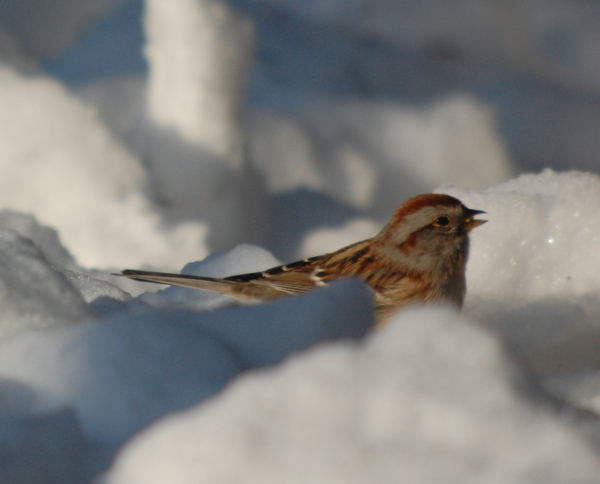The Great Backyard Bird Count was over the weekend and normally for bird county things I like to do it at Mr. Neil's because he gets better birds at his home than I do. But I never cease to be amazed at what I can attract with some sensible bird feeding choices out of my very urban apartment.

My first day on the count wasn't all that. Oh sure, I had these lovely house finches, but I didn't see any of the hoped for winter birds for my hood like robins, Cooper's hawks or chickadees--not that I don't appreciate that pretty pink of male house finches (I love you boys, really I do).

I was starting to think that all I was going to get on my Wingscapes Camera and on the count were non native species like the above starlings until that blue jay photobombed them. Even the house finches are somewhat non native (western species introduced to New York in the 1940s and they gradually worked their way east). But then, Saturday morning I noticed that my news alerts were saying my town was under a Winter Storm Warning.

And snow hit like crazy on Sunday. I had to laugh when I was filling out the form on the Great Backyard Bird Count site. You had to fill in out much snow you had. I was trying to calculate what we had because we had 61 inches on the ground, but last week we hit 45 degrees and some melted. Fortunately, the highest total was 24 inches or above. Even with the melt, we had at least 30 inches. Then 12 more fell on Sunday.

This is from one of the beaches off of Lake Calhoun...where's the horizon??? The frozen lake and the sky were the same color! It was a bleak horizon on Sunday. Fortunately, that changed the game for how many birds that came to my apartment window.

The chickadees and downy woodpeckers came back in spades. They had to fight their way through some pigeons and starlings, but these hard urban residents were able to hold their own.

Everybody was digging the peanut suet. I have some in a suet log that's outside of the view of the camera, but I slathered some on the wall and sprinkled a few chunks on my window ledge. In the above photo, the female cardinal has a huge chunk of suet in her beak and the white-breasted nuthatch was working on the patch of suet I stuck to the wall.

I had to chuckle at some of the photos the Wingscapes camera picked up. This house finch was trying to beat the starlings to the last remnants of the suet on the wall. I didn't even know they would go for suet.
All in all, we had 14 species show up which isn't bad for how urban an area our apartment is located in.

And now that the count is over, I have to figure out how to deal with another 15 inches of snow dealt to us (no doubt by some vengeance seeking groundhog). I keep reminding myself that this time next month, I may find myself sitting in a cool field of freshly melted snow listening for the "peent" of displaying woodcocks.









 Here is a friendly neighborhood tree sparrow reminding you that today is the start of the
Here is a friendly neighborhood tree sparrow reminding you that today is the start of the 
